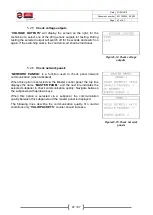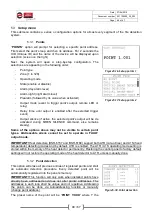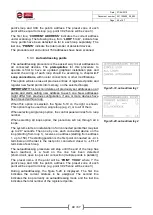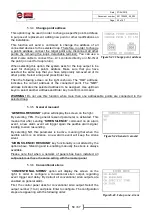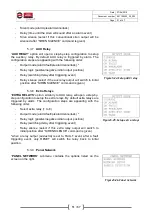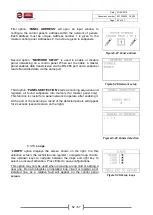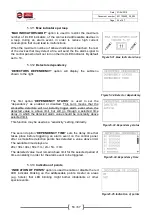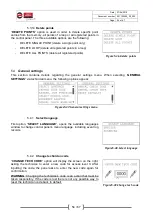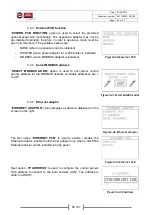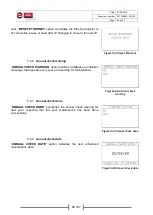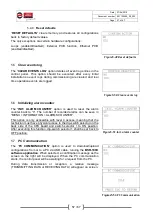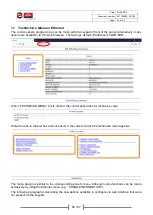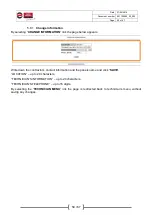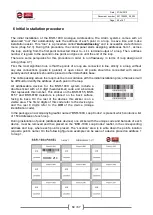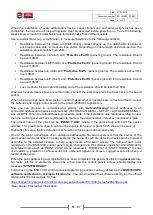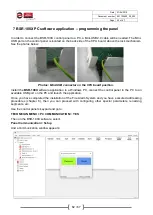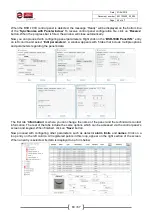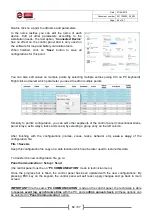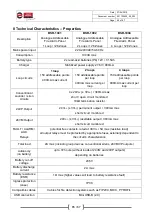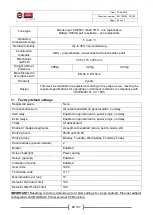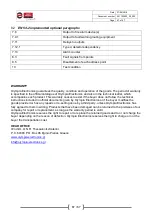
Date
27/06/2019
Document number
921100400_09_002
Page
61 of 67
61 / 67
When the installation of every addressable device, conventional siren and other peripheral has been
completed, then a series of loop wiring tests must be executed before powering on. To do the following
steps simply remove the detachable loop terminal blocks from its/their sockets.
Use a resistor meter (e.g. a multimeter) to measure resistance to the following contacts:
▪
Resistance between
+L
(start) and
+LF
(finish) contact directly on the detachable terminal of
each loop (cable side, to measure loop cable). Depending on cable length and cross-section, the
resistance should be less than 25
Ω.
▪
Resistance between
+L
(start) and “
Protective Earth
” (panel’s ground). The resistance should
be over 10M
Ω.
▪
Resistance between
+LF
(finish) and “
Protective Earth
” (panel’s ground). The resistance should
be over 10M
Ω.
▪
Resistance between
-L
(
start) and “
Protective Earth
” (panel’s ground). The resistance should be
over 10M
Ω.
▪
Resistance between
-LF
(finish) and “
Protective Earth
” (panel’s ground). The resistance should
be over 10M
Ω.
▪
Last, measure the two cable shielding ends. The resistance should be less than 50
Ω.
When all measurements above are within limits, connect the tested loop terminal block back to the board
socket
When all loop wirings have been tested, confirm that all other connections are correct and then connect
the batteries and supply mains power to the panel (230VAC) to power on.
Now you can proceed to commissioning, starting with “
Autoaddressing
” to set addresses to all
connected addressable devices automatically (TECHNICIAN MENU > SETUP > AUTOADDRESSING >
ALL LOOPS). When the autoaddressing procedure ends, if the installation was made according to plan,
then the control panel will have registered into memory the exact number of devices mentioned in plan.
The preset name of the point will be “
POINT Y.XXX
” where Y the point’s loop and XXX the point’s
address. The preset zone of each point will be equal to its loop (e.g. point 3.025 zone will be zone 3).
Right after this step, the fire detection mechanism on this panel is armed and ready.
One of the major advantages of an analogue addressable fire alarm system is that the source of the
alarm event can be identified. In many systems, the name of each fire detection device can be modified
according to the installed location, to help a user locate a fire event quickly. The name of each point
registered on the BSR-100X control panel can be changed (via PC software application and USB cable)
so a default name such as “POINT 2.014” can be renamed to “ROOM 214” or “STAFF ROOM 2”. In case
of an alarm, a prealarm or a fault event, this name will appear on screen. Logged events also keep a
record of the name.
When the point addressing and registration has been completed, the panel should be in
quiescent
state.
No faults, alarms or prealarms should be active and the control panels screen should display the
message “
SYSTEM READY
”.
Full access to the BSR-
100X control panel’s programming options can be granted via the
BSR-100X
PC
software application
by
Olympia Electronics
. You can download the software directly by the official
Olympia Electronics website for free:
https://support.olympia-electronics.gr/olympia_pub/software/PC-1004_Setup%20Software.exe
See chapter 7 for further information.

